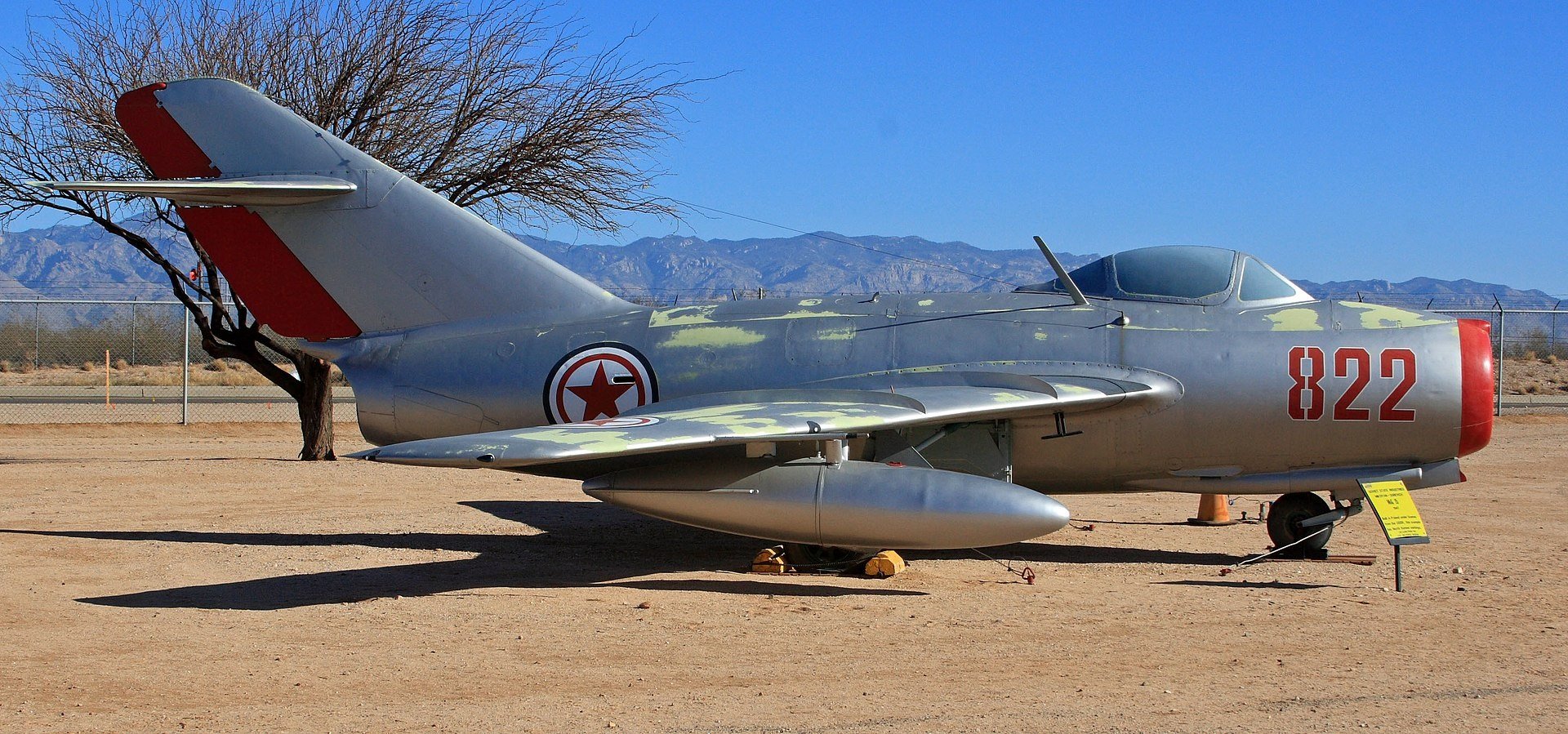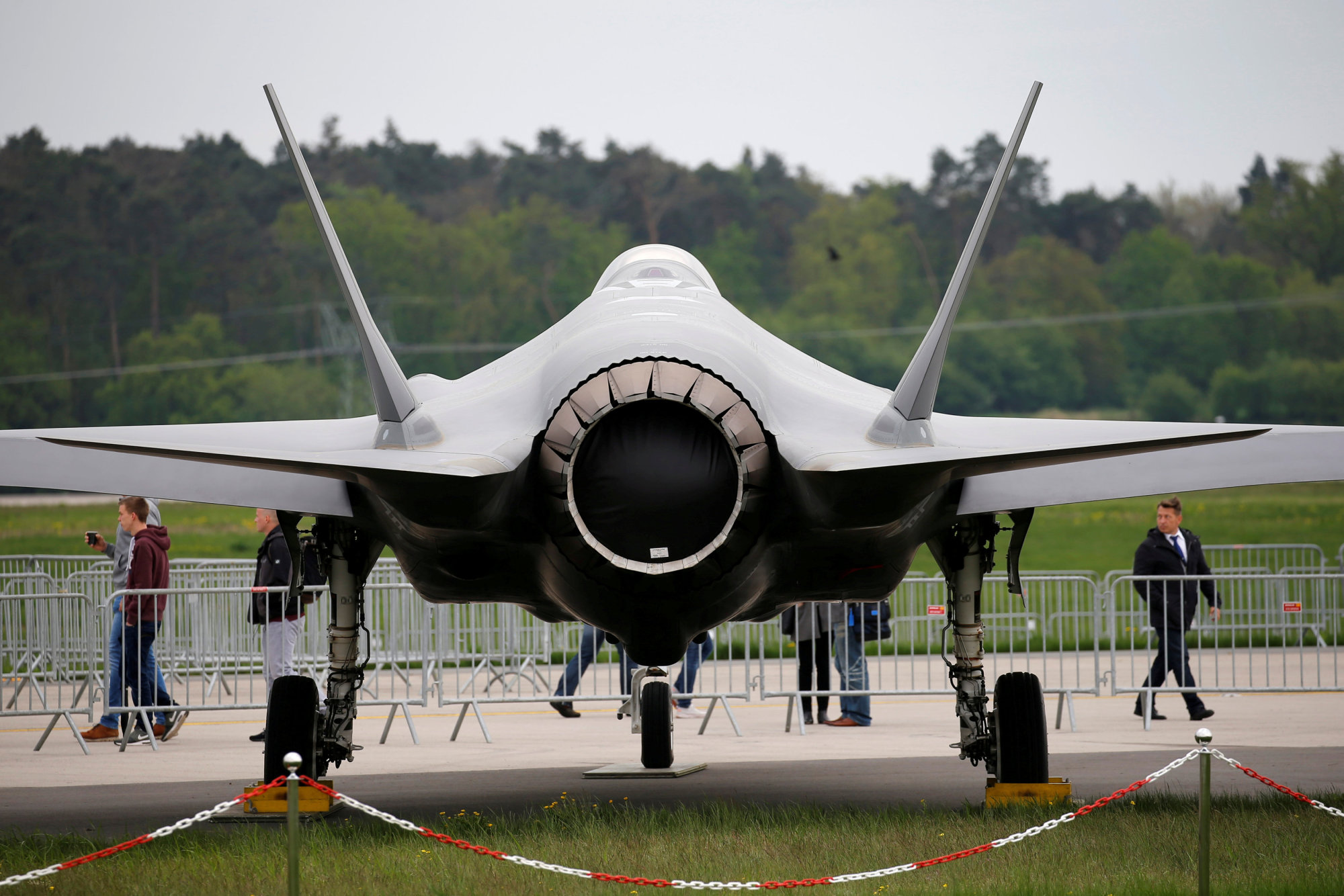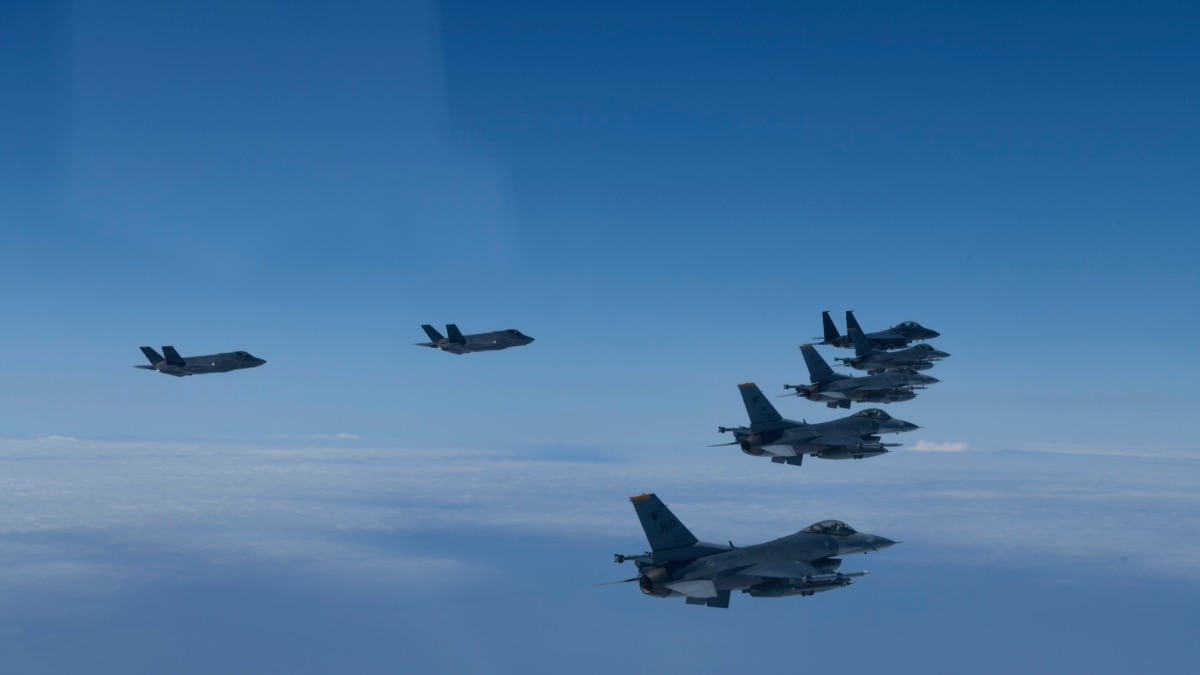North Korean Aircraft - Specifically, these aircraft belong to Antonov's An-148 family. These 70-seat regional jets feature a two-class, 70 seat configuration. Business class consists of an exclusive, eight-seat cabin arranged in a four-abreast (2-2) Meanwhile, the remaining 62 seats have a five-abreast (3-2) setup. Air Koryo received its An-148s brand new in 2012 and 2015.
Months of tension between North Korea and allies South Korea and the US appears to be reaching a new level as Pyongyang moves to demonstrate its opposition to ongoing military exercises south of its borders, while also showcasing its new military firepower.
North Korean Aircraft

Finally, at the more modern end of the spectrum, Air Koryo also has a pair of (albeit inactive) Tupolev Tu-204s. One of these is a comparatively young Tu-204-100, clocking in at a youthful 12.1 years old. , the other example belongs is a smaller Tu-204-300 aged 28.4 years old. This particular plane began life as a 204-100 before being converted.
Air Koryos Young Antonov
The North Korean People's Air Force hasn't acquired a new combat aircraft in more than 30 years. Foreign sanctions and the slow collapse of North Korea's economy mean the air force has little choice but to maintain, for as long as it can, the planes it already has.
Something similar happened back in mid-February at Uiju air base on the border with China. Uiju hosted around half of the air force's H-5s until the regime of North Korean strongman Kim Jong Un apparently converted it into an industrial facility. 28s also assembled outdoors as they relocated.
According to data from ch-aviation.com, Air Koryo has a fleet made up of 14 aircraft from Ukraine and Russia, with some even dating back to the Soviet era. The fleet as a whole is rather old, with an average age of 29.8 years! However, the airline does have a pair of noticeably younger jets that are keeping this future from topping the 30 mark.

In truth, none of this would matter a great deal in wartime. In simulations of a war on the Korean Peninsula, the KPAF doesn't last long. Doubling the MiG-29 force wouldn't make much difference when the South Korean and U.S. Air forces together possess hundreds of the world's most advanced warplanes.
A Trio Of Tupolev Families
The Vigilant Storm drills – which began on Monday and are now scheduled to end on Saturday – involve some 240 fighter jets and other military aircraft conducting about 1,600 joint missions. The air drills followed after the South Korean military wrapped up the 12-day Hoguk 22 field exercises, in which an undisclosed number of US military personnel had participated.
The latest planes in the inventory aren't all that late. According to a recent survey by Flight International, the KPAF in theory possesses 56 MiG-23 and 35 MiG-29 fighters, 34 Su-25 attack planes and 80 H-5 bombers , which are Chinese clones of the Soviet Il-28.
In all, Dempsey counted 12 MiG-29s and 31 Su-25s departing Sunchon and 32 H-5s leaving Uiju. Whereas Flight estimates the KPAF has 35 MiG-29s, IISS believes it has just 18—this despite the possibility, however remote, that Pyonygang has been able to build meaningful numbers of MiG-29s on its own.
While 37.4 years old is a hefty average age for Air Koryo's Tu-134s, they are outdone by the three-engine Tu-154B. Two of these serve the North Korean carrier, with a whopping average age of 41.8 years old! with the airline for their entire careers. Historically speaking, Air Koryo has also operated another two of these trijets.

Probably none of these planes is younger than 30 years old. And it’s possible that, in the decades since Pyongyang acquired them, many of the MiGs, Sukhois and Harbin bombers have crashed and become unflyable for want of parts or maintenance.
Data from ch-aviation shows that Air Koryo presently has three Il-62s in its fleet, of which two remain active. However, with a striking average age of 37.1 years old, their days may be numbered. Historically speaking, the airline has operated a further two Il-62s.
When a hurricane bore down on Tyndall Air Force Base in Florida in October 2018, the U.S. Air Force was able to fly out just 38 of the 55 F-22 stealth fighters at the base. The other 17, unflyable due to a lack of spares , rode out the storm in hangars.
Al Jazeera's Rob McBride, reporting from the South Korean capital, Seoul, said some of the North Korean aircraft movements had been close enough to the Demilitarized Zone (DMZ) that separates the two Koreas to trigger the scrambling of South Korean jets in response.
The tour by the defense chiefs of the US Air Force's Joint Base Andrews in Maryland, which is home to nuclear-capable B-1B and B-52 bombers, was an opportunity to “highlight America's military might amid evolving North Korean threats”, Yonhap reported.

Yes, the KPAF reportedly has modified the H-5s to carry cruise missiles. Still, the planes are museum pieces. The U.S. Air Force has kept its 1960s-vintage B-52s relevant by constantly updating all of the bombers' systems. Their defensive gear. And, in coming years, their engines. The North Korean air force apparently has not done the same with its H-6s.
“The irresponsible decision of the US and South Korea is shoving the present situation, caused by provocative military acts of the allied forces, to an uncontrollable phase,” he said, according to South Korea’s Yonhap News Agency.
“The South Korean military has announced that during the day – from late morning local time through to mid-afternoon here – they have been detecting flight by around 180 military aircraft of different types in North Korea – right across the breadth of the North Korean part of the peninsula,” he said.
Journalist - A graduate in German, Jake has a passion for aviation history, and enjoys sampling new carriers and aircraft even if doing so demands an unorthodox itinerary. A keen amateur photographer, he also recently reached the milestone of flying his 100th sector as a passenger Based in Norwich, UK.
The H-5 fleet, by contrast, appears to be suffering. If, as Dempsey assumes, Uiju hosted 40 or s0 bombers prior to the relocation, the fact that just 17 of the planes departed the base means more than half can't fly That perhaps is unsurprising. The H-5, a Chinese copy of a bomber that first flew in 1948, is old.

South Korea's Joint Chiefs of Staff (JCS) said on Friday the North Korean warplanes were detected in various areas inland and along the country's eastern and western coasts, but they did not come particularly close to the inter-Korean border.
Recent airfield closures gave analysts a chance to count North Korea's active aircraft. Sunchon air base in west-central North Korea, home of Pyongyang's Su-25s and MiG-29s, has closed for runway repairs. In mid-April, the base's planes assembled out in the open ahead of relocation to other bases. Commercial satellites snapped photos.
Ilyushin also has a presence when it comes to Air Koryo's cargo division. This is made up of three examples of the company's Il-76TD design. These have an average age of 30.6 years, and have spent their entire careers with Air Koryo since joining in 1990.
“Publicly available assessments appear to be based upon historical totals of aircraft delivered, with no allowance for attrition,” Dempsey explained. “Given all types have been in service for decades, losses through accident and aircraft damage will inevitably have mounted up, thus reducing inventory numbers.”
The most popular aircraft manufacturer at Air Koryo in terms of the number of different families present is Tupolev. The North Korean national airline operates three designs from this company, with one even featuring two different variants from the family in question. -134B-3s 37.4 years old), and is reportedly the last carrier to do so.

In a visit described as “highly choreographed” amid the tension on the Korean Peninsula, South Korea’s Minister of Defense Lee Jong-sup toured a US airbase on Thursday with US Secretary of Defense Lloyd Austin, Yonhap reported.
None of those planes breached the South Korean military's virtual “tactical action” line, which is designated to be located 20-50km (12-31 miles) north of the two countries' land and sea boundaries. give the South enough time to respond to provocations or attacks.
When South Korea and the US announced on Thursday they were extending the Vigilant Storm exercises by a day in response to North Korea’s earlier missile launches, an official in Pyongyang warned that the situation had entered a dangerous phase.
If the KPAF has 18 MiG-29s and 12 relocated, that hints that the air force has managed to keep two-thirds of its most modern fighter in flyable condition. If the KPAF has 35 MiG-29s and just a dozen switched bases, it could speak to the air force's struggle to keep its latest fighters war-ready.
North Korea's state-owned national carrier Air Koryo is a subject of great curiosity among many avgeeks. From its hub at Pyongyang Sunan International Airport (FNJ), the airline flies to a handful of destinations, both domestically and in neighboring China and Russia. what aircraft does it operate these services with?
Tallying North Korea's flyable warplanes is tantamount to an extinction countdown. Those planes won't last forever. And when they're gone, there might not be any way for Pyongyang to replace them. In that sense, the KPAF has a lot in common with another endangered air force—Ukraine's.
north korean fighter aircraft, north korea fighter planes, north korean bomber aircraft, north korean fighters, north korean aircraft korean war, north korean air force planes, north korean military aircraft, north korea fighter jets inventory